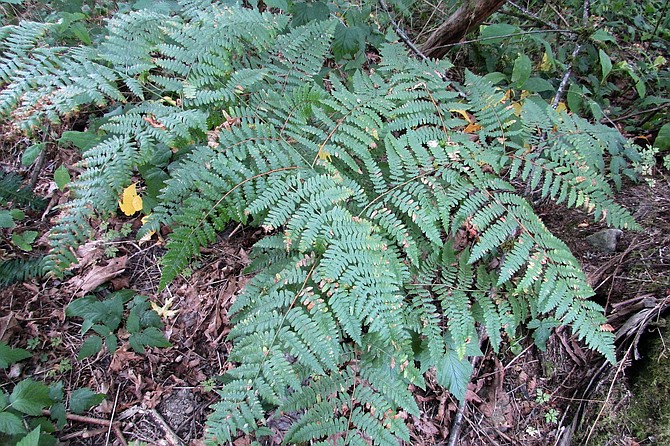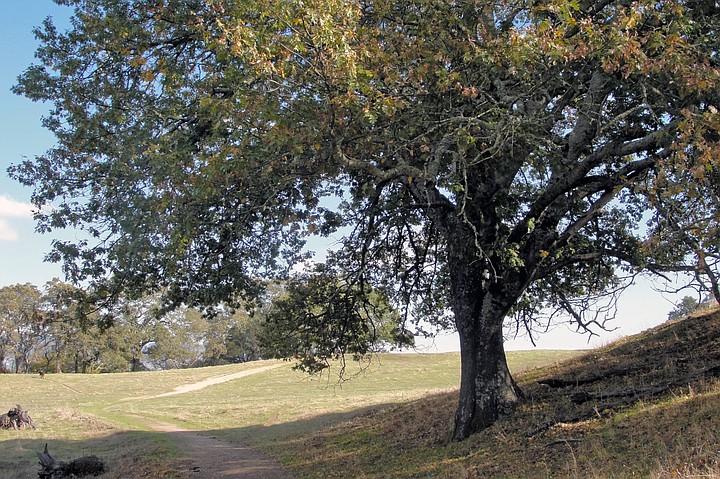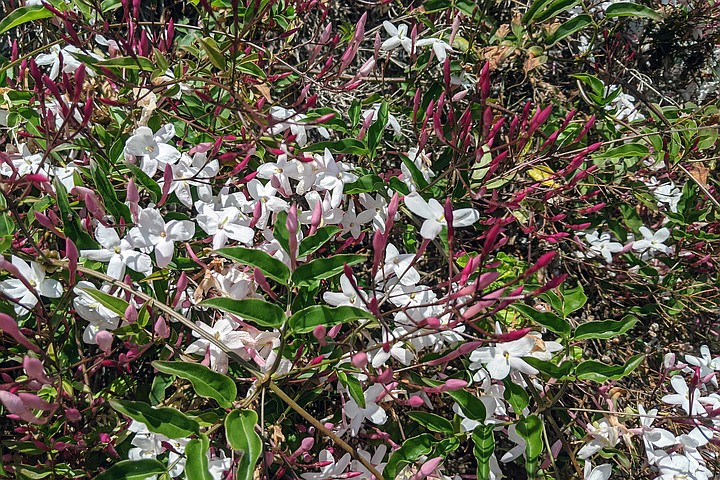 Facebook
Facebook
 X
X
 Instagram
Instagram
 TikTok
TikTok
 Youtube
Youtube

Bracken Ferns are rising on the higher mountains of San Diego County, their bright green, unfolding fronds (called “fiddleheads”) pushing up through the russet remains of last year’s growth. By late April or May, fully opened ferns will line the creeks and hollows of the Palomar, Cuyamaca, and Laguna mountains. While many plants reproduce through seeds, ferns reproduce through rhizomes. A rhizome is an underground branched stem that runs sideways and sends out roots and shoots. Propagation through rhizomes is one of the most effective reproduction methods in plants and many invasive plants spread this way. The rhizomes survive even when cut from their mother plant and continue to give birth to new plants. Bamboo and Bermuda grass are other types of rhizomes we see locally.

The Black Oak, San Diego County’s most handsome native deciduous tree, is sending out new leaves this week, painting the mountain slopes with shades of red, brown, and bright green. The newly emergent leaves are reddish brown in color, giving a pseudo-autumn tinge to the forest. After a week or two, the unfolding leaves acquire a light green tint; after a month, they’re dark green. Black oaks are common throughout the upper elevations of the Palomar and Laguna Mountains. Enjoy the best of the show by exploring either the Fry Creek or Observatory Trails on Palomar Mountain. Both begin at the national-forest campground area two miles below Palomar Observatory.

Star Jasmine’s sweet perfume, exuded from clusters of small, white flowers, will continue to scent San Diego’s spring breezes until sometime in June. Not a true jasmine, or Jasminum, star jasmine belongs to the genus Trachelospermum. In both public and private spaces, it has been widely planted as an ornamental ground cover and as a trellised vine.


Bracken Ferns are rising on the higher mountains of San Diego County, their bright green, unfolding fronds (called “fiddleheads”) pushing up through the russet remains of last year’s growth. By late April or May, fully opened ferns will line the creeks and hollows of the Palomar, Cuyamaca, and Laguna mountains. While many plants reproduce through seeds, ferns reproduce through rhizomes. A rhizome is an underground branched stem that runs sideways and sends out roots and shoots. Propagation through rhizomes is one of the most effective reproduction methods in plants and many invasive plants spread this way. The rhizomes survive even when cut from their mother plant and continue to give birth to new plants. Bamboo and Bermuda grass are other types of rhizomes we see locally.

The Black Oak, San Diego County’s most handsome native deciduous tree, is sending out new leaves this week, painting the mountain slopes with shades of red, brown, and bright green. The newly emergent leaves are reddish brown in color, giving a pseudo-autumn tinge to the forest. After a week or two, the unfolding leaves acquire a light green tint; after a month, they’re dark green. Black oaks are common throughout the upper elevations of the Palomar and Laguna Mountains. Enjoy the best of the show by exploring either the Fry Creek or Observatory Trails on Palomar Mountain. Both begin at the national-forest campground area two miles below Palomar Observatory.

Star Jasmine’s sweet perfume, exuded from clusters of small, white flowers, will continue to scent San Diego’s spring breezes until sometime in June. Not a true jasmine, or Jasminum, star jasmine belongs to the genus Trachelospermum. In both public and private spaces, it has been widely planted as an ornamental ground cover and as a trellised vine.
Comments